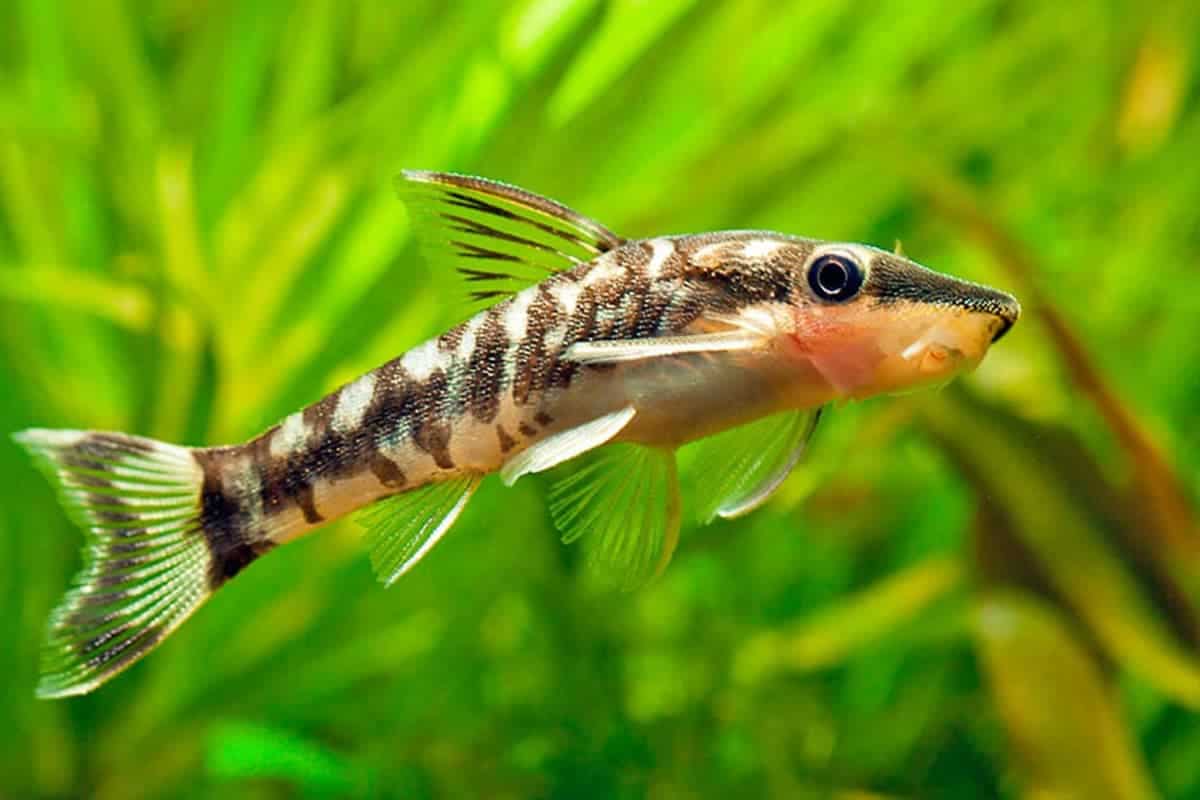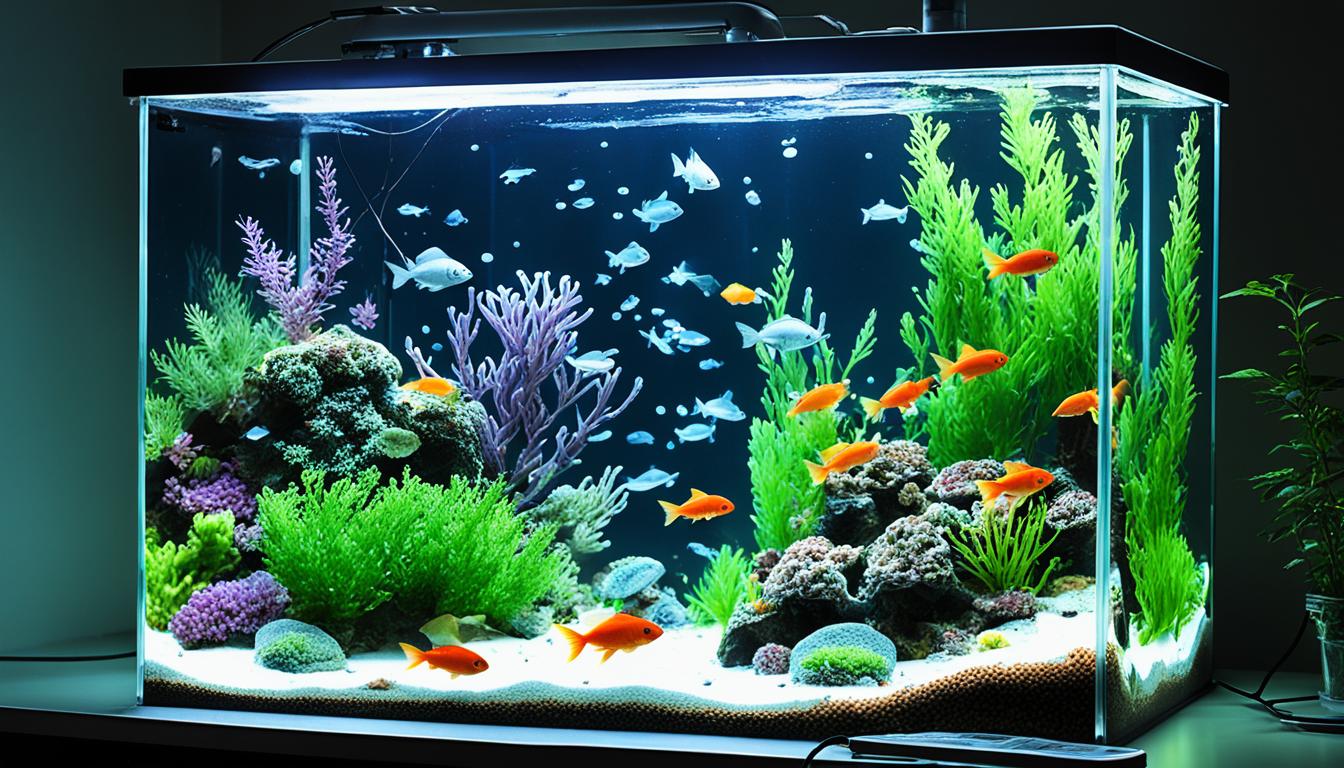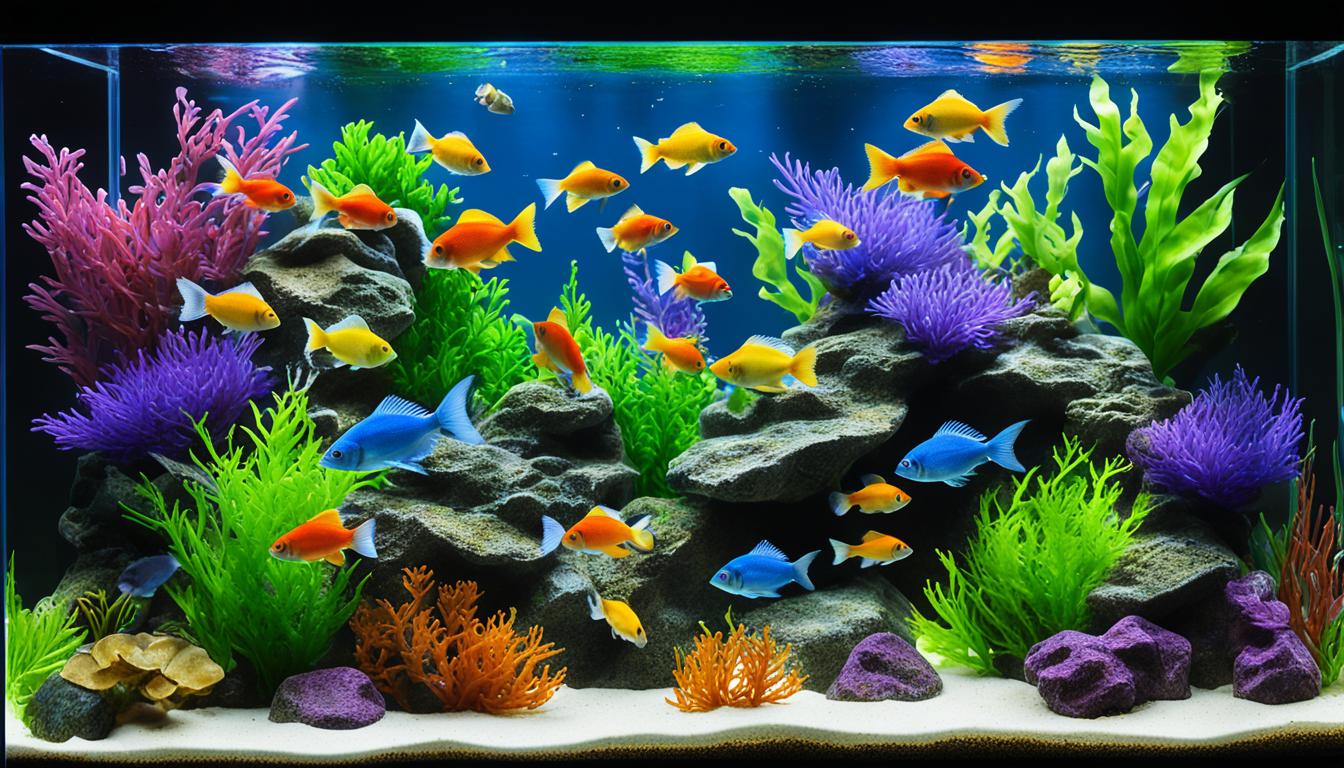A minimum of three Otocinclus catfish should be kept together in a group. Otos are social and should not be kept in groups of less than three.
(20 words) Otocinclus catfish, also known as Otos, are popular algae-eating fish commonly kept in aquariums. Many aquarists wonder how many Otocinclus they should have in their tanks to maintain a healthy and balanced environment. It is recommended to keep at least three Otocinclus catfish together in a group.
These social creatures thrive better when they have companions of their own kind. Keeping them in groups of less than three can lead to stress and discomfort. We will explore the ideal number of Otocinclus catfish to ensure their well-being and the overall harmony of your aquarium.

Credit: badmanstropicalfish.com
Table of Contents
Understanding The Importance Of Otocinclus
Understanding the importance of Otocinclus is crucial when considering how many Otocinclus catfish to have. Although they are often purchased solely for algae control, Otos are social and should not be kept in groups of less than three.
Otocinclus Catfish For Algae Control In Aquariums:
Otocinclus catfish, also known as otos, are small and peaceful freshwater fish that are commonly kept in aquariums for their remarkable ability to control algae growth. These adorable algae-eating fish are a popular choice among aquarists due to their efficiency in maintaining a clean and healthy tank environment.
Here’s why Otocinclus catfish are crucial in keeping your aquarium free from unwanted algae:
- Natural algae control: Otocinclus catfish have a voracious appetite for algae. They excel at grazing on various types of algae, including green spot algae, hair algae, and even stubborn brown algae. By continuously munching on algae, they help prevent it from overtaking your tank and creating a visually unappealing environment.
- Promote plant growth: Aside from controlling algae, Otocinclus catfish also indirectly contribute to the healthy growth of aquatic plants in your aquarium. Algae can compete with plants for essential nutrients, light, and space. By keeping algae under control, otos ensure that your plants receive the necessary resources to thrive.
- Sensitive but effective: Otos thrive in tanks with stable water parameters and a well-maintained environment. They are highly sensitive to water conditions, so their presence encourages aquarists to consistently monitor and maintain optimal water quality. This dedication to tank maintenance benefits all the other inhabitants as well.
- Social, but not solitary: Otos are social creatures that are best kept in groups of three or more. When kept in larger numbers, they exhibit natural behaviors and engage in playful activities. By providing a suitable social environment for your Otocinclus catfish, you’re ensuring their overall well-being and allowing them to exhibit their natural behaviors.
- Ultra-low bioload: Another advantage of Otocinclus catfish is their ultra-low bioload. They have a small size and minimal waste production, making them suitable for both small and large aquariums. With their low impact on water quality, you can maintain a stable ecosystem and keep other fish species without the worry of overcrowding or excessive waste.
Otocinclus catfish are not only an attractive addition to any aquarium but also play a vital role in maintaining a healthy tank environment. By keeping algae in check, promoting plant growth, and encouraging responsible tank maintenance, these little fish ensure a visually appealing and thriving aquatic ecosystem.
So, consider adding Otocinclus catfish to your tank to enjoy a well-balanced and beautiful underwater world.
Factors To Consider When Determining The Number Of Otocinclus
When determining the number of Otocinclus catfish to keep, it is important to consider their social nature. These fish should be kept in groups of at least three to promote their well-being and prevent stress.
Otocinclus catfish are popular additions to freshwater aquariums due to their ability to control algae growth. However, it is essential to consider several factors before determining the number of Otocinclus to keep in your tank. The following elements should be taken into account to ensure the health and well-being of both the Otocinclus and other fish species in your aquarium:
Tank Size And Capacity:
- Consider the size of your tank when determining the number of Otocinclus to keep.
- As a general rule, provide at least a 10-gallon tank for a small group of Otocinclus.
- Ensure that your tank has sufficient hiding spots and plant coverage to allow Otocinclus to feel secure.
Compatibility With Other Fish Species:
- Otocinclus are peaceful community fish that can coexist with a variety of species, including small tetras, guppies, and rasboras.
- Avoid keeping Otocinclus with aggressive or highly territorial fish that may intimidate or harm them.
- Research the specific compatibility of potential tankmates to ensure a harmonious and stress-free environment.
Algae Levels And Growth Rate:
- Evaluate the amount of algae in your tank and the rate at which it grows before determining the number of Otocinclus to keep.
- Otocinclus primarily feed on algae, so a higher number may be necessary if your aquarium has a significant algae problem.
- However, it is crucial not to overstock your tank with Otocinclus, as they may not receive enough algae to sustain them.
Remember, each aquarium setup is unique, and it is essential to consider the specific conditions of your tank when determining the number of Otocinclus to keep. Keep an eye on their behavior, as inadequate space or competition for resources can lead to stress and health issues.
By carefully considering tank size, compatibility with other fish species, and algae levels, you can ensure a thriving and balanced aquatic ecosystem in your tank.
Optimal Number Of Otocinclus For Different Tank Sizes
For optimal care, it is recommended to keep a group of at least three Otocinclus catfish in your aquarium. However, the specific number may vary depending on the size of your tank.
Small Tanks (10-20 Gallons):
Otocinclus catfish, also known as otos, are small algae-eating fish that are popular choices for smaller aquariums. If you have a small tank with a capacity of 10-20 gallons, here are some key points to consider when deciding the optimal number of otocinclus to keep:
- Ideal number of Otocinclus: It is recommended to have a group of 3-5 otocinclus in a small tank. Keeping them in a small group allows them to exhibit natural behaviors and promotes social interactions among them.
- Benefits of keeping a small group: By keeping a small group of otocinclus, you can enhance their well-being and overall health. They feel more secure in the presence of their companions, making them more active and less stressed. Additionally, a group of otos can cover a larger surface area of the tank, ensuring more effective algae control.
Medium Tanks (30-50 Gallons):
In medium-sized tanks, ranging from 30-50 gallons, the optimal number of otocinclus should be increased to maintain a healthy ecosystem. Here’s what you need to know:
- Recommended number of Otocinclus: Aim to keep a group of 6-8 otocinclus in a medium-sized tank. This larger group size allows for better algae control, as they can cover a larger area and consume more algae.
- Ensuring a healthy ecosystem in the tank: Having a sufficient number of otocinclus in a medium-sized tank helps maintain a balanced ecosystem. These fish are excellent algae eaters and can help keep the tank consistently clean. A larger group will create a more effective algae control system, reducing the need for manual cleaning and promoting overall tank health.
Large Tanks (Above 50 Gallons):
For larger aquarium setups with a capacity exceeding 50 gallons, the suggested number of otocinclus increases further. Here’s what you should consider:
- Suggested number of Otocinclus: In larger tanks, it is recommended to keep a group of 10-15 otocinclus. This larger group size is necessary to ensure harmony and balance in a larger aquatic environment.
- Maintaining harmony in a larger aquarium setup: A larger tank requires a higher number of otos to keep up with the increased algae growth. Keeping a sufficient number of otocinclus in a larger aquarium helps distribute their feeding activities evenly across the tank, preventing excessive algae growth in certain areas. This creates a more visually appealing tank and reduces the workload of manual algae removal.
Remember, when introducing otocinclus to your tank, it is essential to acclimate them properly and gradually increase their numbers. This will help them become accustomed to their new environment and reduce stress. Providing ample hiding spots and suitable tank conditions will also contribute to their overall well-being.
The Role Of Gender In Otocinclus Grouping
Otocinclus catfish are social creatures and should be kept in groups of at least three. It is important to consider the appropriate number of Otocinclus per gallon to ensure their health and happiness.
Understanding The Behavior Of Male And Female Otocinclus:
- Male Otocinclus are typically smaller in size compared to their female counterparts.
- Male Otocinclus are known to exhibit territorial behavior, especially during mating season.
- Female Otocinclus tend to be more social and tolerant of other fish in the tank.
- Male Otocinclus may display aggressive behavior towards each other if kept in small groups.
Implications On The Ideal Number In A Tank:
- It is recommended to keep a group of at least 3 Otocinclus in a tank to ensure social interaction and reduce aggression.
- Maintaining a male to female ratio of 1: 2 or 1:3 can help minimize territorial conflicts.
- Keeping a larger group of Otocinclus, around 5-6 individuals, promotes a more natural and harmonious environment.
- The size of the tank and the presence of other fish should also be taken into consideration when determining the ideal number of Otocinclus.
Remember, understanding the behavior and dynamics of male and female Otocinclus is crucial when deciding on the number of fish to keep in a tank. By considering their social needs and territorial tendencies, you can create a healthy and balanced environment for these fascinating catfish.
Group Dynamics And Social Interaction Among Otocinclus
To ensure the health and happiness of Otocinclus catfish, it is recommended to keep them in groups of at least three. These social fish thrive when they have companionship, making group dynamics and social interaction an important aspect of their well-being.
Observations On Otocinclus Behavior In Groups:
- Otocinclus catfish are known for their social behavior and thrive when kept in groups.
- In groups, they display more natural behaviors and are generally more active.
- They establish a hierarchy within the group, with dominant members taking charge.
- They often swim and forage together, creating a visually appealing display in the aquarium.
- When kept alone, Otocinclus can become stressed and exhibit reclusive behaviors.
The Impact Of Group Dynamics On Their Well-Being And Activity Level:
- Group dynamics play a crucial role in the well-being and activity level of Otocinclus.
- Being social creatures, they feel more secure and comfortable when surrounded by their own species.
- Group interactions stimulate their natural instincts and encourage more activity.
- Group dynamics also play a role in their feeding habits, as they learn from each other and explore new areas for food.
- In larger groups, individuals tend to exhibit less aggression and territorial behavior.
Remember, it is essential to provide adequate space and hiding spots for each Otocinclus, even within a group. Pay attention to tank size recommendations to ensure their overall well-being.
By understanding and considering the group dynamics and social interaction among Otocinclus, you can create a thriving environment for these fascinating fish in your aquarium.
Possible Challenges And Considerations
When considering how many Otocinclus catfish to keep, it’s important to keep them in groups of at least three to ensure their social needs are met. Avoid keeping them in groups of less than three, even if they are primarily purchased for algae control.
When deciding to keep Otocinclus catfish, it is essential to consider the possible challenges that may arise. These challenges include overcrowding and its effects on water quality, as well as providing sufficient food and hiding spots for all Otocinclus.
Overcrowding And Its Effects On Water Quality:
Overcrowding can have negative consequences on the water quality in your aquarium. It is important to keep in mind the following considerations:
- Maintain a suitable tank size: Otocinclus catfish are small in size, but they still require ample swimming space. It is recommended to have at least a 10-gallon tank for these catfish.
- Consider the number of fish: Otocinclus catfish are social creatures and should not be kept alone. Keeping them in groups of at least three is recommended. However, overcrowding the tank with too many Otocinclus can lead to stress, aggression, and poor water quality.
- Monitor water parameters: Overcrowding can lead to an imbalance in the water parameters. Regularly test the water quality, including ammonia, nitrite, nitrate, and pH levels. Performing routine water changes can help maintain a healthy environment for your Otocinclus.
Providing Sufficient Food And Hiding Spots For All Otocinclus:
To ensure the well-being of your Otocinclus catfish, it’s crucial to provide them with sufficient food and hiding spots. Consider the following points:
- Algae as the main food source: Otocinclus catfish are primarily herbivores and rely on algae as their main source of nutrition. Make sure your aquarium has enough algae growth for them to graze on.
- Supplement with additional food: While algae is their natural diet, it’s a good idea to supplement their food with specially formulated algae wafers or pellets. This ensures they receive a well-rounded diet and guarantees their nutritional needs are met.
- Create hiding spots: Otocinclus catfish are known to be shy and require hiding spots in the aquarium. Provide them with plants, driftwood, or caves where they can retreat when they feel threatened or stressed.
Remember, striking a balance between the number of Otocinclus, tank size, water quality, and food availability is crucial for the health and happiness of these catfish. By considering these challenges and making the necessary adjustments, you can create a suitable and thriving environment for your Otocinclus catfish.
Frequently Asked Questions Of How Many Otocinclus
How Many Otocinclus Catfish Do I Need?
You should keep at least three Otocinclus catfish together for socialization and optimum algae control.
How Many Otos In A 30 Gallon Tank?
It is recommended to have 3 Otocinclus catfish in a 30-gallon tank.
Do Otocinclus Need To Be In Pairs?
Otocinclus should not be kept in pairs; they should be kept in groups of at least three.
How Many Otos Should I Have?
Otos should be kept in groups of at least three.
Conclusion
When it comes to keeping Otocinclus catfish, it’s important to consider the right number for your aquarium setup. These social creatures should not be kept alone or in small groups, less than three individuals. A good guideline is to have at least three to five Otocinclus in your tank.
This ensures that they are happy, healthy, and able to exhibit their natural behaviors. Otocinclus are known for their algae-eating abilities, so having a small group will ensure that they can efficiently clean your tank. It’s also worth noting that Otocinclus should be kept in a well-maintained tank with plenty of hiding spots and vegetation.
Overall, the recommended number of Otocinclus is three to five individuals, but if you have a larger tank, you can consider keeping more. Just remember to provide them with a suitable environment to thrive in.










[…] is another crucial factor in maintaining a healthy tank for both species. Yoyo loaches thrive in water temperatures between 75-82℉, while dwarf frogs […]
[…] environment for Giant Danios to thrive and reach their full potential in terms of size. A larger tank allows them to swim freely and encourages healthy […]
[…] safer substances in your aquarium. Keeping these bacteria safe during water changes is vital for a healthy tank. Understanding their importance and how to protect them ensures your fish stay in optimal […]
[…] Eggs need the perfect environment. Blue ram eggs are very sensitive. Keep the water warm at 84-86°F (29-30°C) and soft. This helps the eggs grow well. Do regular water changes and watch out for fungus. These steps keep the water in the tanks healthy. […]